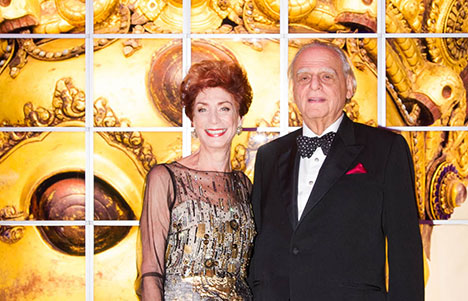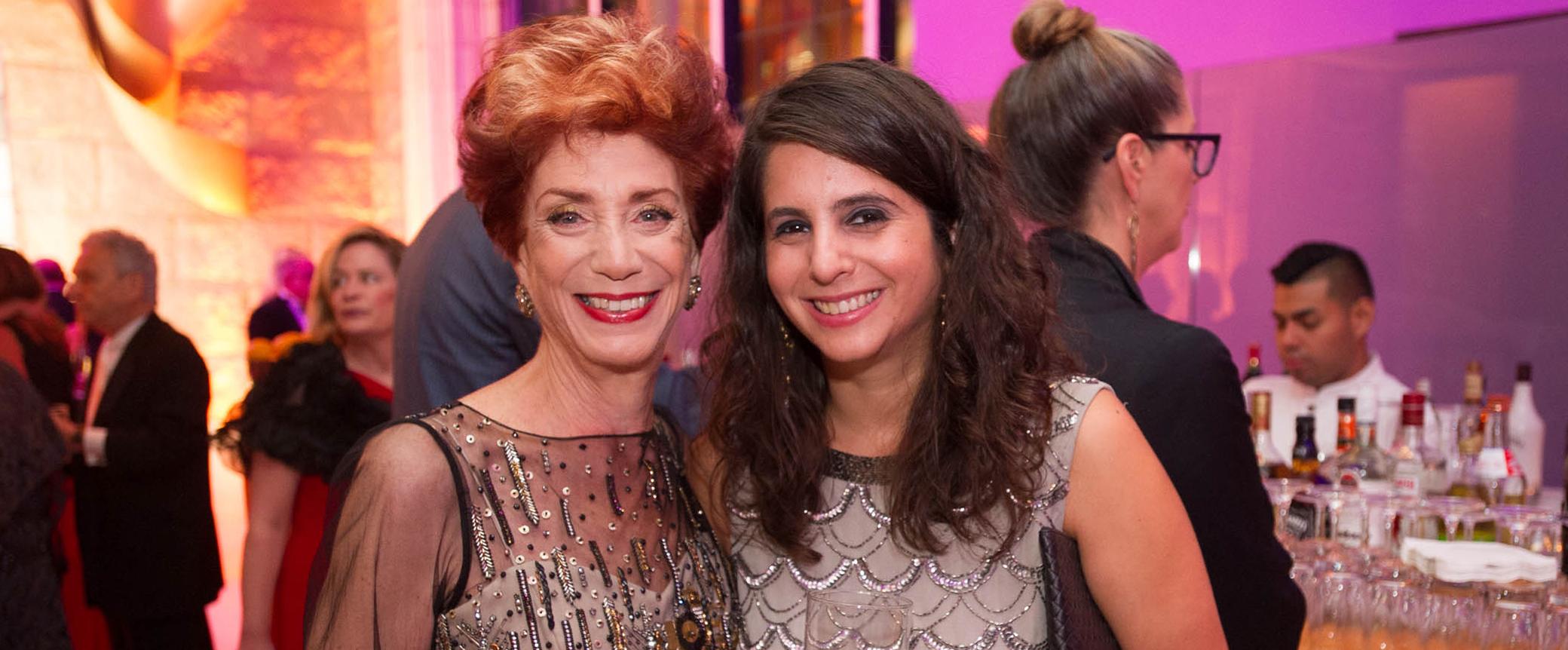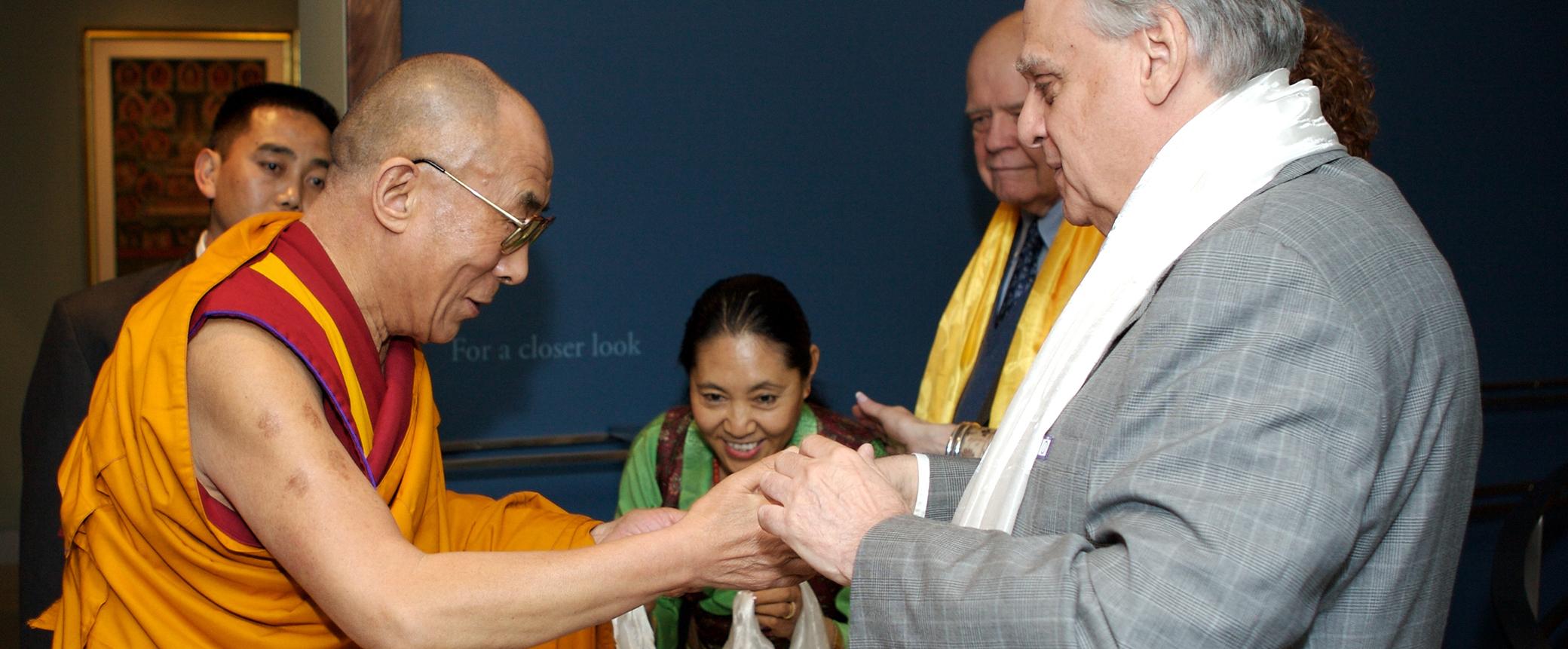
Shelley and Donald Rubin, Founders of the Rubin Museum of Art
Shelley and Donald Rubin began collecting Himalayan art in a moment of serendipity. One day in the mid-1970s, while walking on Madison Avenue, a painting in the window of an art gallery stopped them in their tracks and drew them in.
Once inside the gallery, they learned that the painting—fantastic, colorful, otherworldly—was a thangka, a Tibetan painting on cloth. Created centuries before, it depicted White Tara, a Buddhist deity associated with longevity. They had enough saved to purchase the White Tara, and they came back some months later to acquire a second painting they had set their eyes on.

Over the ensuing decades, they fell in love with other pieces, and their collection grew in depth and scope. The Rubins realized that they had gradually come into possession of significant cultural material from a country and people in diaspora—and they saw the urgency of helping preserve the artworks and sharing them with the world.
In time they began to support cultural projects and preservation in the Himalayan region. In 1995,
the
Rubins established the Shelley & Donald Rubin Foundation to promote social justice, support the
arts, and meet urgent human needs, primarily in the Himalaya and New York City. They believe that
art
has the potential to challenge the status quo and generate new opportunities for creative engagement
with issues that affect all members of society.

With backgrounds in health care and technology—Donald founded Multiplan, one of the oldest Preferred
Provider Organizations in the country, and Shelley was one of the first female coders in the nascent
technology sector—they made the Foundation an early adopter in using technology to tackle healthcare
issues and advance cultural and social causes. Early initiatives included Music and Memory, Labor
Arts,
Himalayan Art Resources, and Treasury of Lives, among others. As their collection of Himalayan art
grew,
they sought a home to share it widely. In 1998, the Rubins purchased the site of the former Barney’s
department store in Chelsea, and six years later, the Rubin Museum of Art opened to the public,
bringing
the art, cultures, and ideas of the Himalayan region to New York City and beyond. A few months after
the
opening in 2004, His Holiness the Dalai Lama visited and blessed the Rubin Museum, also thanking the
Rubins for preserving Himalayan art.
.jpg)
The Rubins continued to seed and support projects that combined the arts and activism in innovative ways to build communities and encourage civic participation. In 2010, they opened The 8th Floor, an interdisciplinary exhibition and event space to promote artistic, cultural, and philanthropic initiatives. The following year, Shelley founded A Blade of Grass, the first grant-making nonprofit solely dedicated to nurturing socially engaged art. In 2016, the Shelley & Donald Rubin Foundation began to focus solely on art and social justice in New York City.
For their contributions to the artistic and cultural life of New York, Shelley and Donald Rubin are recipients of the Bedrock Award from the Associates Group of the Public Design Commission (2015); India Abroad Person of the Year (2015); and the Gertrude Vanderbilt Whitney Award for Outstanding Patronage of the Arts (2016). In 2019, Asia Week New York honored them for their contributions to advancing the arts of Asia in North America.
The White Tara that started it all over four decades ago is now enjoyed and appreciated by the many visitors to the Rubin Museum. Shelley and Donald Rubin continue to be part of the life of the Rubin Museum, having set in course a ripple effect of learning and inspiration, whereby people of all ages and places have the opportunity to experience this art and the universal meaning it imparts.
The emotion generated by viewing a great work of art is very much like falling in love. The
passion radiating from the art overtakes us with its power and beauty. It’s truly a heart
connection.
—Shelley and Donald Rubin

__large.jpg)

__large.jpg)
